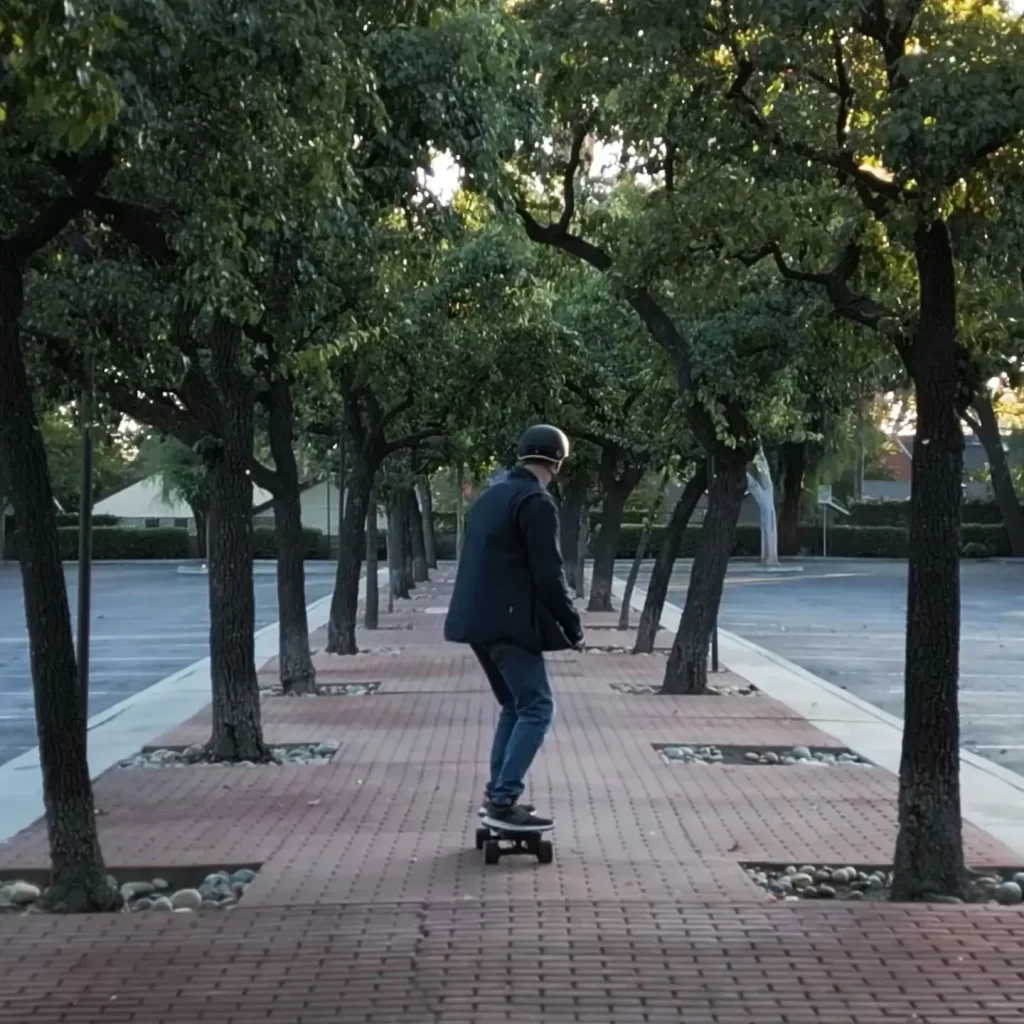Electric skateboarding, a fusion of traditional skateboarding and innovative technology, has revolutionized urban transport and leisure.
These motor-powered boards, often equipped with a remote for control, offer a unique blend of convenience, speed, and fun. But for those new to the world of electric skateboards, a fundamental question arises: Are electric skateboards easy to ride?
This question is crucial for beginners and traditional skateboarders alike, as it influences the approach to learning and embracing this evolving mode of transportation. In this blog, we dive into the ease of riding electric skateboards, exploring factors from design differences to personal experience, to provide a comprehensive understanding for both enthusiastic novices and seasoned riders.

Electric skateboards, while retaining the fundamental design of traditional skateboards, bring a significant technological twist to the table. The most notable difference lies in the propulsion system: electric skateboards are powered by motors controlled via a remote, eliminating the need for manual pushing. This motorization not only adds to the ease of movement but also introduces new dynamics in handling and speed.
Most electric skateboards align with the longboard style, known for its stability and comfort, especially at higher speeds. This longer, flatter design enhances balance, making them inherently more stable compared to shorter, conventional skateboards. For those already proficient in regular skateboarding, transitioning to electric variants is often seamless. The familiarity with board dynamics remains, while the added benefits of motor assistance and electronic braking systems offer a new level of control and safety.
Notably, the braking system in electric skateboards is a game-changer. The ability to decelerate smoothly and efficiently through a remote control provides a level of safety and convenience that traditional skateboards lack. This feature is particularly beneficial in urban environments where quick stops and speed adjustments are often necessary.
Mastering steering and maneuverability on an electric skateboard is a key aspect of the riding experience. Much like a traditional skateboard, turning on an electric skateboard involves a subtle shift of body weight. When intending to turn, riders simply lean slightly in the desired direction. This weight redistribution affects the board's trucks (the turning mechanism), allowing for smooth directional changes.
For more experienced riders, 'carving' is a popular and exhilarating technique. Carving involves a more pronounced shifting of weight and a rhythmic, back-and-forth motion, akin to making an 'S' pattern on the pavement. This technique makes for a thrilling ride, helps maintain balance at higher speeds, and adds an element of artistry to the ride.
The responsiveness of an electric skateboard in carving and turning is often praised. The electric assist provides a smooth, consistent flow, making these maneuvers feel more controlled compared to a non-motorized board. The ability to adjust speed with the remote control further aids in precision steering, allowing riders to confidently tackle turns and carves.
In essence, while the basics of steering an electric skateboard are straightforward and akin to traditional skateboarding, the added features of electric boards offer enhanced control and creativity in maneuverability for riders of all skill levels.
Remember, finding the right stance involves trial and error. Embrace the falls, learn from them, and soon, you'll be confidently navigating your electric skateboard.
Embarking on the journey of riding an electric skateboard involves a learning curve that varies from person to person. For complete beginners, it's about building a foundational balance and getting accustomed to the board's response to weight shifts and remote control inputs. Typically, mastering the basic movement and control can take a few days to a couple of weeks, depending on the individual's coordination, balance skills, and practice frequency.
For those with prior experience in skateboarding or similar sports like surfing, then learning process is often faster. The existing skills in balance and movement transfer well to electric skateboarding, with the added need to adapt to the motor's power and the remote control's functionality.
Regardless of the starting point, consistent practice is crucial. Regularly spending time on the board, experimenting with various speeds, and learning to maneuver in different settings significantly accelerates the learning process. Coordination, a key factor in riding an electric skateboard effectively, improves with practice, as does the rider's confidence and ability to handle more complex maneuvers and varying terrains.
Safety should always be your top priority when embarking on the electric skateboarding journey. Beginners, especially, should start slow and prioritize learning in controlled, safe environments. Practicing in areas free from traffic and obstacles, such as empty parking lots or smooth pavement in parks, can provide a secure space to develop skills without undue risks.
Protective gear is essential, regardless of your experience level. Helmets, wrist guards, elbow pads, and knee pads significantly reduce the risk of injury in the event of a fall. Even experienced riders are not immune to accidents, making the consistent use of safety gear non-negotiable. Remember, electric skateboarding can be an exhilarating and fun activity, but it should always be approached with caution and respect for the potential hazards.
Remember, patience and perseverance are crucial. Every rider progresses at their own pace, so give yourself time to learn and improve.
Electric skateboards have revolutionized personal transportation, blending environmental friendliness with convenience and fun. These boards, powered by electricity, offer an eco-friendly alternative to fossil fuels, reducing CO2 emissions. They are easy to ride, thanks to motorized propulsion and remote-controlled speed and braking. Beyond just being a leisure activity, electric skateboards serve as efficient commuting tools capable of reaching significant speeds and distances.
Riding an electric skateboard also contributes to physical health by improving core strength, balance, and cardiovascular fitness. For the thrill-seekers, they offer an adrenaline-packed experience, perfect for breaking away from the monotony of daily routines.
We'd love to hear from you! Share your electric skateboarding experiences, tips, or any questions you might have in the comments below. Let's continue to grow this vibrant community of eco-conscious and fun-loving riders!
